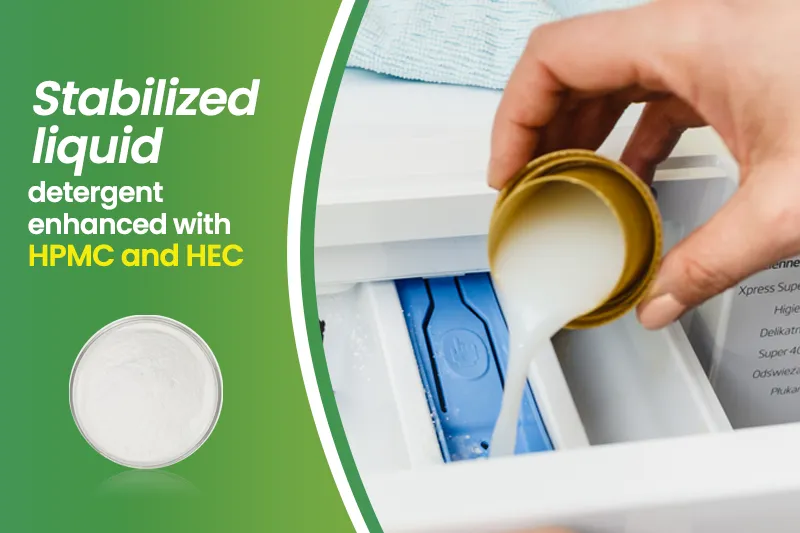
I.Understanding the Basics of Liquid Detergent Formulation
At the heart of a liquid detergent is a balanced system of active ingredients and adjuvants. The following are the main components:
Surfactants: detergents that break down grease and grime.
Water: the solvent that keeps everything in solution.
Preservatives: prevent microbial growth.
Flavors, Colorants, Enzymes: improve sensory appeal and performance.
Thickeners and stabilizers: used to control viscosity, suspend particles and prevent separation.
This last category of thickeners and stabilizers is where HPMC and HEC excel. Not only do they improve texture and appearance, but they also increase the stability and shelf life of the detergent.
II.Why HPMC and HEC are Crucial in Liquid Detergents

1.HPMC (Hydroxypropyl Methyl Cellulose)
2.HEC (Hydroxyethyl Cellulose)
3.Key Functions
The combination of HPMC and HEC enhances the suspension of enzyme and flavor particles and prevents sedimentation.
Rheology control and stability enhancement
HPMC and HEC modulate flow characteristics for optimal pouring and stability. HEC maintains flowability at low temperatures, and the gelation of HPMC prevents ingredient stratification.
Enhanced Cleaning Efficiency
HPMC forms a protective matrix around proteases and amylases to minimize activity loss during storage. This is critical for phosphate-free formulations, where enzyme stability directly affects stain removal. HPMC and HEC enhance stain removal by extending the residence time of surfactants on fabrics through film-forming properties, especially in hard water conditions.
Compatibility
HPMC and HEC replace petroleum-based polymers to improve biodegradability. Studies have shown that citric acid, a common environmental additive, works synergistically with these celluloses to enhance enzyme performance in phosphate-free systems.
III.Common Liquid Detergent Problems
1.Unstable viscosity
Over time or at different temperatures, the product can become too thin or too thick. HPMC is a reliable thickener as it has strong temperature resistance and can maintain a stable viscosity. Meanwhile, HPMC has ideal flow characteristics for better control.
2. Detergent separation or precipitation
Detergent laying for a long time and delamination is a major problem. Especially in detergents containing multiple active ingredients or added particles, HEC has an excellent stabilizing effect, ensures the correct surfactant balance, avoids overloading the system with incompatible additives, and thus reduces the risk of separation or settling.
3. What is the best thickener for liquid detergent formulation?
Both HPMC and HEC are good choices. HPMC provides great thickening and flow control, while HEC is ideal for clear, salt-resistant systems.
4. Can I use both HPMC and HEC?
Yes, you can! Many customers use both products to complement each other’s strengths: HPMC for structure and HEC for clarity and texture.
5. What is the ideal viscosity for household liquid detergents?
Generally speaking, 1,500-3,000 cps at 25°C is the ideal viscosity for hand-pouring products, but it depends on your brand position and dispenser type.

IV. How to Effectively Use HPMC and HEC in Formulations
For HPMC and HEC to perform optimally, it is important to follow the correct process:
1. Recommended dosage:
HPMC: Typically 0.3% to 1.0%, depending on desired viscosity.
HEC: Typically 0.2% to 0.8%, especially in clear formulations.
2. Dissolution Tip:
Slowly disperse the powder into water with stirring.
Avoid adding hot water directly, as this may cause agglomeration.
V. Conclusion
Optimizing liquid detergent formulation is not just about mixing the right surfactants, it’s about creating a balanced product that meets consumer expectations. Using high quality additives such as HPMC and HEC can help you solve common formulation problems. Whether you are launching a new line of detergents or improving an existing formulation, consider HPMC and HEC as your preferred formulation enhancers. Their versatility and performance will make a noticeable difference.













